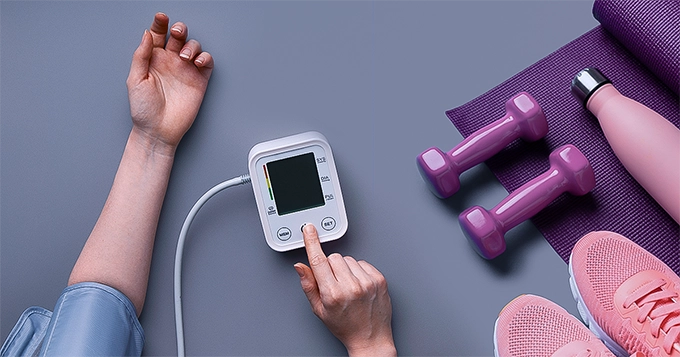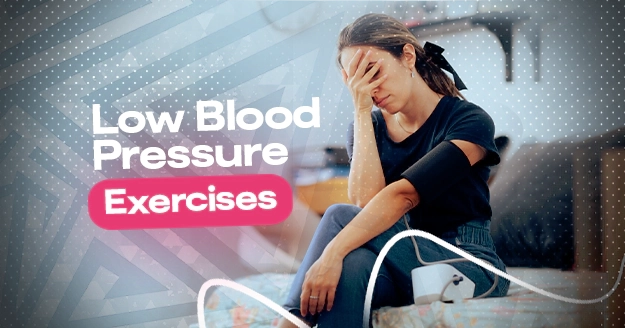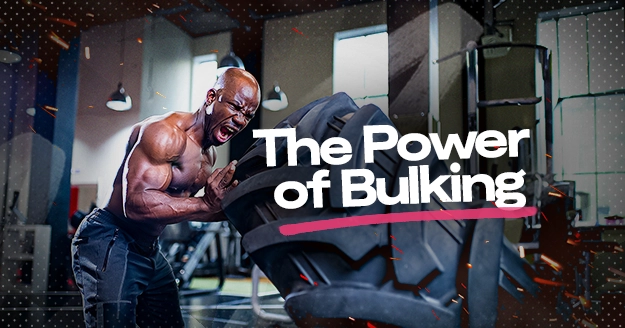Blurry vision? Lightheadedness? Sleepiness?
These are common symptoms of low blood pressure or hypotension.
It’s not just hypertension that you should know about. You should also be on alert for any low blood pressure symptoms.
What is low blood pressure?
The volume of blood the heart pumps, and the amount of resistance to blood flow in the arteries together determine blood pressure. The unit used for the measurement of blood pressure is millimeters of mercury (mm Hg). It has two figures:
Systolic force. The pressure in the arteries while the heart beats is represented by the first number or the upper number.
Diastolic force. The second number, or the bottom number, represents the pressure in the arteries between heartbeats.
Low blood pressure results when a person’s blood pressure is significantly lower than normal. The normal blood pressure ranges from 90/60 mmHg to 120/80 mmHg. What does hypotension indicate? It indicates that the body’s heart, brain, and other organs are not receiving enough blood.
Types of low blood pressure
Orthostatic hypotension (postural hypotension).
This is a sudden drop in blood pressure upon getting up from lying down or seated position. Dehydration, pregnancy, prolonged bed rest, certain medical conditions, and some drugs are some of the causes. Older people usually have this type of hypotension.
Postprandial hypotension.
After eating, this drop in blood pressure happens one to two hours later. Small, low-carb meals, increased water consumption, and abstinence from alcohol can all assist in lessening symptoms.
Neurally mediated hypotension.
This kind of low blood pressure, also known as vasovagal syncope or the fainting reflex, is brought on by prolonged standing, which blocks blood flow to the heart, brain, and other vital organs and causes blood to pool in the legs and ankles.
Multiple system atrophy with orthostatic hypotension.
This uncommon hypotension gradually weakens the autonomic nervous system, which regulates involuntary processes, including blood pressure, breathing, digestion, and heart rate.
Symptoms
Symptoms of hypotension may include:
- Lightheadedness
- Weakness
- Blurry vision
- Sleepiness
- Confusion
- Dizziness
- Fainting (syncope)
- Nausea or vomiting
The condition known as shock can be the result of extremely low blood pressure. Shock symptoms include:
- Confusion, especially in the elderly
- Clammy, cold skin
- Pallor or unhealthy pale appearance
- Shallow, rapid breathing
- Weak and rapid pulse
How would you know if you have low blood pressure?
Aside from having the symptoms, other tests can be performed. Electrocardiogram or ECG test measures the heart rate and rhythm. An echocardiogram is also another ultrasound test to visualize the heart. Blood tests to check for anemia can be performed as well.
There may be a need for more advanced home ECG monitoring (a Holter monitor or “event” monitor) to look for intermittent cardiac issues or an irregular heartbeat that could cause your blood pressure to drop suddenly.
Another test that can be helpful in checking for low blood pressure is an exercise stress test or an electrophysiology test (EP test).
How to treat low blood pressure?
A change in food and lifestyle can effectively treat chronic low blood pressure in many people. If you are wondering about the relationship between low blood pressure and exercise, here’s your answer: regular exercise is linked to lowered cardiovascular risk, cardiac remodeling, and decreased blood pressure.
Exercise for low blood pressure
Cycling. Cycling is a good low blood pressure exercise if you are actively pedaling for at least 10 minutes while riding your bike.
Dancing. Zumba and other dance programs are effective workouts. Any form of dancing that involves full body movement and raises heart rate is good for hypotension.
Gardening or other yard work. Raking leaves and cutting the grass are two examples of this. Spend 30 to 45 minutes working in the yard.
Hiking. If you’re new to hiking, start out on trails designed for beginners. Set a goal to progress to tougher paths.
Running or jogging. Run or jug to greater distances or quicker speeds gradually, beginning with shorter and slower speeds. You can alternate between running and jogging while walking.
Swimming. Aqua jogging can be an excellent place to start for someone who is just getting used to working out in the pool. It might also be beneficial to use equipment like an aqua jogging belt or a pool noodle to add additional buoyancy while jogging.
Other things you can do aside from doing exercise for low blood pressure:
- Eat a diet higher in salt.
- Limit alcoholic beverages.
- When it’s hot outside, and you have a viral sickness like the flu or a cold, you should drink more fluids (especially non-alcoholic drinks).
- When getting up from sitting or lying down, exercise caution. Before standing up, pump your feet and ankles a few times to help with circulation. When getting out of bed, take a few minutes to sit straight on the edge of the mattress before standing.
- Avoid standing still for an extended period of time.
- Avoid spending too much time in hot water, such as in hot tubs and showers. Sit down if you start to feel queasy. In cases where you need to sit down, keeping a chair or stool nearby may be useful. Use a nonslip chair or stool made specifically for showers and bathtubs to prevent accidents.
- Consider eating smaller, more frequent meals to help prevent issues with low blood pressure and reduce episodes of feeling lightheaded after meals. Consume fewer carbohydrates. After eating, relax. Avoid taking blood pressure medications before meals.
- Use calf and thigh-covering elastic support (compression) stockings if necessary. By preventing blood from flowing to the legs, they may assist in keeping more blood in the upper body.
Conclusion
Exercise does a lot of wonders for our bodies. We can have fun, get in shape, and treat low blood pressure while exercising. So, make sure to allot some time for some physical activities. And if you’re worried that you might have hypotension because you’re experiencing some of the symptoms listed above, it’s important to see a healthcare professional to get the correct diagnosis.










